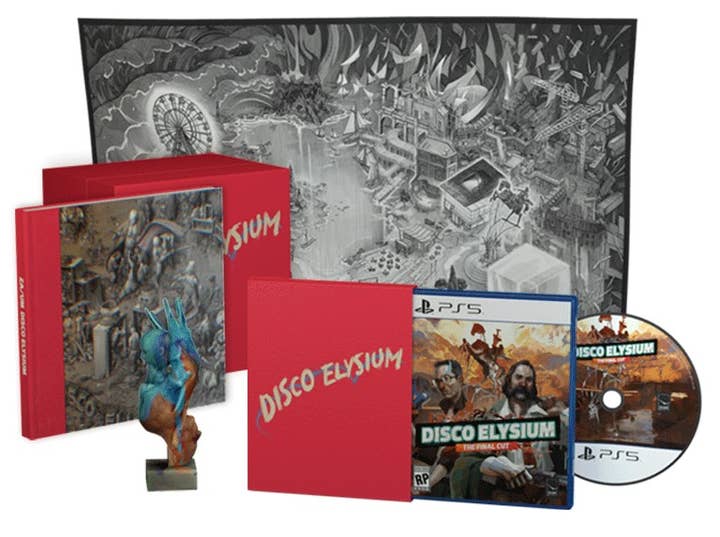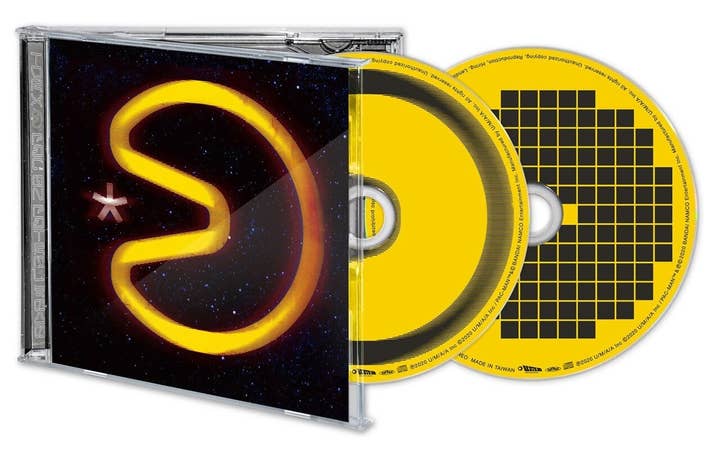Iam8bit on keeping physical alive in the age of downloads | GI Live Online
Founder Jon Gibson discusses how specialised manufacturers have adapted to the shift towards digital
The video games industry has passed the digital tipping point, with the bulk of software purchased accounted for by downloads rather than boxed product. Yet demand remains high enough for physical items that many businesses can still justify the cost and complexities of manufacturing.
Some do so by offering something a little more specialised, and a prime example of this is merchandise provider and indie publisher Iam8bit.
Founded in 2005 and started as the world's first pop culture themed art show -- that theme, of course, being video games -- the US company not only sells boxed editions of previously download-only titles, but also more specialist items such as vinyl soundtracks and art prints. During our GI Live Online event earlier this year, GamesIndustry.biz spoke with Iam8bit founder Jon Gibson about the role of physical media in today's industry and how it has evolved in recent years.

Before starting Iam8bit, he was an animation writer working for Cartoon Network, Nickelodeon, and Disney Channel at the time. Previous to that, he was in the games media space writing for magazines. He knew many different artists through his animation career, and saw both his animation and video game worlds collide. Through the art show, he wanted to showcase a medium for young artists who also loved them, to share with the world.
Eventually, the brand grew and he met his business partner, Amanda White, who came from film production. They're both curious people, and get stifled by cookie cutter approaches. That's why Iam8bit tries to always make its business personal, specific, and nuanced.
One of Iam8bit's first projects was an LP for the video game Tron Evolution, in response to the Tron Legacy movie that was released at the time. The company only made a few hundred as a mailer, and then some of them were being sold for about $1,000-$1,200 on the aftermarket.
Iam8bit did the same thing with Wolfenstein when Bethesda bought the IP. The LP had a collection of iconic German songs that were used in the game's trailers and advertising. There were three versions and they were given away to random people. They were given one of the three versions but not guaranteed all three. These LPs were going for high prices in the aftermarket as well.
"You look at those two examples, and you start to realize people want video game soundtracks, on wax. So we just started approaching companies to license video game soundtracks, and we were laughed out of the room on so many occasions," explained Gibson.
It took many conversations to convince other parties that this would be a worthwhile endeavor. A few companies gave Iam8bit a chance, namely Devolver Digital with Hotline Miami and PlayStation with Journey. Rare was one of their first clients as well. From that point on, it was just a matter of proving that there was a market for this.
"We just started approaching companies to license video game soundtracks, and we were laughed out of the room on so many occasions"
The market for physical copies of video games was similar. There were many signs that pointed to physical media being on its way out, but Iam8bit took the approach of a premium collectible. Gibson mentions that a large portion of customers still don't fully download games. Not everyone has the same broadband connection or lives in New York and Los Angeles or any of the big metropolitan areas in the United States.
There's been talk about the switch to a digital future, but both digital and physical game sales increased last year, particularly due to the pandemic. One of the recent successes that Iam8bit had was with the Nintendo Switch version of Ori and the Will of the Wisps. The company had worked with developer Moon Studios for many years on the vinyl soundtrack for Ori and the Blind Forest, and so when Will of the Wisps was released, the license had already been secured. However, the company wanted to leverage its expertise to deliver something truly unique for fans of the series.
With the Collector's Edition, Iam8bit wanted to bring the Ori experience into someone's life in a permanent way. As a result of the pandemic, the company had to evolve its perspective on how to approach products and how meaningful they could be when done right.
"That's where you get the transforming box, the stained glass art piece. It's not junk, and it's not stuff that you're just going to toss in the garbage, or is going to get lost in a drawer. It's stuff you're going to proudly display as part of your life," Gibson continued. "Even the box itself is something that looks nice, and can be used in showing off in a way that you can be proud of."

Gibson also touched upon the differences between direct-to-consumer sales versus retail. In retail, you have to be much more on the noise and have to explain what the product is to a customer because it might be their first time discovering it on the shelf. Whereas direct-to-consumer has much more freedom. You can create different aesthetics for the packaging and don't have to include a verbose product description for every gameplay feature because the customer that you're capturing is already a fan of the property.
"The power of retail is much more about grabbing people where they buy games and consume media, and exposing them to things that they otherwise wouldn't discover at all," Gibson explained. "Direct-to-consumer is about celebrating for the fan. This beautiful opportunity to give them something really special that is meaningful to their life, you know, someone who's played two games for hours and hours and hours in the universe, they have an emotional connection to that game."
"The power of retail is... exposing them to things that they otherwise wouldn't discover at all. Direct-to-consumer is about celebrating for the fan"
In terms of manufacturing, the number of units created for a physical copy of a game can make a difference. If only 500-1,000 units are being created, it's harder to create certain physical goods. However, if there are 5,000-10,000 units in production, then that opens up more options. For example, Iam8bit released Untitled Goose Game physically, and wanted to innovate within the direct-to-consumer space, so they added eco-friendly packaging. But there were limitations to that because some supply chains are lacking.
It's expensive to produce eco-friendly products, and if you're going to manufacture them on a global scale, the materials don't exist in all the places they need to. You would have to ship all of those materials into different markets and then would effectively waste more energy and polluting more by doing so.
Untitled Goose Game was used as a test model for the direct-to-consumer eco friendly packaging model because the title had broken into the zeitgeist. Kids were dressing like geese for Halloween, so Iam8bit already knew the game was a hit. The company partnered with SkyBound Games to go mass retail globally, and developers House House and Panic saw the potential in the release.
Additionally, one aspect of manufacturing that isn't discussed as much when making a product en masse is that inventory is a tax liability, so it's very important to not carry much inventory. The better approach is to replenish rather than to just have a stockpile of product.

Even if it's cheaper to produce 50,000 units at a per unit cost, it's much smarter to produce a couple thousand of something and then produce a couple thousand more of it by popular demand. Otherwise, overproduction can actually sink businesses.
"We've seen many developers make those mistakes, and get suckered in by manufacturers saying, 'Oh, well, if you add a couple thousand more, we can shave off $1 or $2.' But at the end of the day, what is that dollar worth to you if you're sitting on thousands of extra units you can't sell versus spending a couple extra bucks," explains Gibson.
"At the end of the day, what is that dollar worth to you if you're sitting on thousands of extra units you can't sell versus spending a couple extra bucks?"
Untitled Goose Game was a big hit culturally, and Gibson spoke about what kinds of genres that would work best when it comes to creating physical copies. While it's not scientific, he noticed that console gamers purchase the most physical merchandise.
He thinks it's because console gamers typically play many different kinds of games, and aren't fixated to one game for the entire year. Their interests are wider and are more prone to be more involved in conventions.
PC gamers, on the other hand, are more much more lifestyle focused. They are typically playing a few games for a much longer period of time. Take League of Legends, World of Warcraft, and Overwatch as examples. They're playing hundreds of hours on these titles and also investing in their PC rig and accessories that go with it. In that sense, PC gamers are much less prone to consume merchandise from different places.
Interestingly, Gibson said that the mobile market is one that he hasn't fully cracked yet. Mobile games are typically free to play, and even with the premium model, it's still inexpensive relative to console or PC. Habits are different and not many mobile game players are conditioned to see value in extending their experience of a title's mythology into merchandise. The very rare case for this is Angry Birds, where for example, you can buy plush dolls of the game's birds at convenience stores.
Having 100 million mobile players, or 200 million mobile players, doesn't necessarily mean you're going to sell millions of t-shirts or something. Gibson says, "In fact, it's, it's much harder, because there's not really a direct connection to that experience that you play for five or ten minutes to wanting to extend into your life."

Gibson mentioned that when considering which games to create merchandise of, the general thesis is that there needs to be an audience to sell merchandise to. If you don't have an audience, then there's no one to buy it. Typically, the recommendation is to let the game find its footing with an audience and then have it grow digitally. That way, you can see what the audience's appetite is like.
Start slow, and don't overwhelm and make too much merchandise all at once. For Iam8bit, physical games and vinyl are their anchor products. They're the higher-priced items, but they are the most obvious ones that customers are seeking. You can even implement different phases, with the first one including the game and soundtrack. Once you see how the audience reacts, then you can do phase two or phase three and release items like art prints, t-shirts, and plush dolls.
"If you spread yourself that thin, you'd have to start making sacrifices"
There's a delicate balance in what to release and when. He compares two restaurants: In-n-Out and McDonalds. The former is successful because of the fact that it doesn't offer many choices. There's the hamburger, cheeseburger, french fries, milkshakes, and that's pretty much it. There aren't many customization options.
However, if you look at McDonald's, the restaurant has almost everything. In-n-out's efficiency is prolific as well as the workers move very quickly and can still provide the customer with a quality meal. However, McDonald's is moving quick too, but it's not serving the best food.
Gibson says, "If you spread yourself that thin, you'd have to start making sacrifices. You start choosing materials that aren't the best. You hold inventory that has to serve multiple purposes. And you just start making decisions that probably aren't the best for your fans."
What ends up happening is that when consumers have too many choices, they tend not to make any choice at all and not buy anything. If you're stuck with indecision, you might just end up walking away altogether. It's better to grow an audience than it is to overwhelm them at first.
Lastly, the most important aspect to remember is that merchandise can expend the life cycle of a game exponentially, and companies should look at merchandise as a beat on a marketing calendar. Gibson notes Among Us as an example.
The game was released several years ago, and was all of a sudden rediscovered and became a massive hit. There are stories like that, where a game releases and then an audience finds that game six months, a year, or two years later and then explodes. It's not like the movies where there's a theatrical window and an opening weekend. If the box office busts and the movie bombs, then it gets labeled as a bomb for the rest of its existence.
Gibson believes that the future is bright for physical media in the video game industry. He compares physical goods to that of an experience in a theme park or visiting a foreign country. It's part of the whole experience, when a person wants to buy a piece of merchandise from Disney World to remind them of their time there.
"When you're emotionally attached to something, you want to clock that thing and you want a momento. Much like going to France, you might buy a refrigerator magnet to remind you of the Eiffel Tower," he explains.
It's the same type of experience as playing Ori and the Blind Forest for many hours. You spend quite a bit of time in a magical forest and meeting animal friends. You experience life, death, chaos, and thrills. When you come out of it, the game's themes, songs, and language become meaningful to you.
"So, you know, physical merchandise is about that emotional connection more than anything else," Gibson concluded. "If games continue to provoke and instill that kind of experience, and are only getting better at it, you're just going to see more and more stuff that people want as a result of that."
You can watch the full interview below, or download the podcast verison here.


